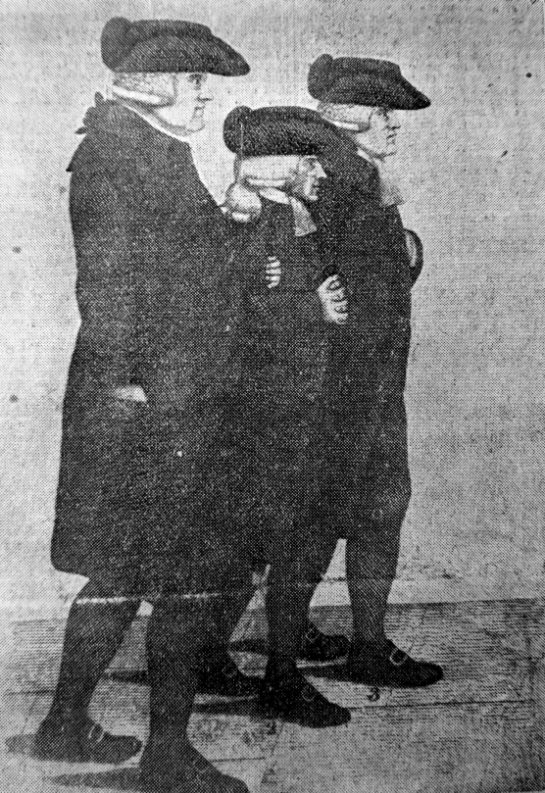Mexborough & Swinton Times, December, 9th, 1932
Methodist Relics
Sketch of John Wesley
Billingley Museum

If ever the history of Wesleyan Methodism in the Wath Circuit is compiled, the village of Billingley will have a prominent place in it. The records of over a hundred years of Methdism are well preserved and there are few homes in the village that do not possess Wesleyan relics.
Mr. James Casson Firth, of Woodbine Cottage, Billingley Green, has a “museum” of them. These include a, christening bowl used at, the village chapel more than a century ago, a complete list of preachers’ plans in 1846 to the present date, and an old volume in which there is a rare picture of John Wesley. Many of these relics have not seen daylight for a good many years.
The christening bowl is an ordinary earthenware basin some eight inches across the top but of quaint design. Mr. Firth has proof that it, was used at the christening of his great-great-great grandmother. Mrs. Benjamin Casson, who before her marriage was Sarah Cope, of Great Houghton. It served as a font long before Billingley had a place of worship, and was used for baptisms long after the chapel was built in 1818.
To the preservation of a complete record of preaching engagements for the last eighty six years posterity is indebted to the late Mr. Jacob Jackson of Wath, a devout and greatly loved man. They are posted, one for each year, in a, large scrap hook and the care with which this has been done shows not only that Jacob had a due sense of his responsibilities but that he was a man with a tidy mind. Billingley was formerly in the Rotherham Circuit and when the cChange to Wath was made in 1854 a special plan was printed on very fine art silk. The book became full in 1890 after which the plans were inserted loose. Of its kind the record must be unique.
Of the value of the picture of John Wesley one can only guess, but it is certain that there are many museums and libraries that would be glad to have it. John Wesley is depicted walking in the streets of Edinburgh, between two friends and the footnote informs us that the sketch was “taken by an original genius who was expert in sketching with great correctness the figures of every eminent person that appeared publicly in the city.” We see from this sketch that the great evangelist was a man of low stature. His black tricorns hat is pulled well over his eyes, the upturned collar, white cravat and gaiters are typical of the period. The sketch was made in 1790, the year before Wesley’s death.
Other relics turned out by Mr. Firth include a photograph dated 1873, of all the local preachers in the Wath Circuit. They are about sixty in number and probably the only survivor is Mr. Daniel Hammond, of Wombwell, he is in his ninetieth year. Mrs. Firth a cake-dish on which there is a souvenir ritire of a Volunteer Bazaar at Wath in 1866 a rifleman presenting arms.
Mr. Firth also possesses many relics relating to the Fitzwilliams, neatly printed memorial cards commemorating William Wentworth Fitzwilliam, Viscount Milton, who died at Rouen in January 1877. at the age of 38, and Frances Harriet, Countess Fitzwilliam. who died at Coollattin, Ireland, in June 1895. Both are buried at Wentworth.